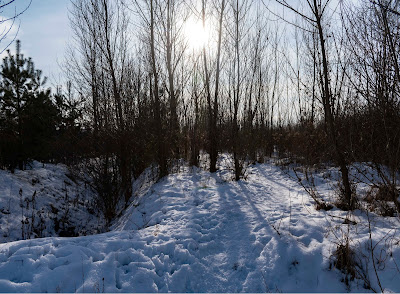End of the month and time to look at how much stronger the 63-year-old Mr Dembinski is in both will and body than his 62-year-old self.
Walking - well, because of working from home, less than last January, some 900 paces on average a day fewer (11.9k in 2020, 11.0k in 2021). But more moderate-to-high intensity walking, according to the app (37 mins in Jan 2020, 40 mins in Jan 2021). And more portions of fresh fruit & veg (7.2 portions a day, compared to 5.8 portions last January), a benefit of working from home. And other than 75ml of vodka (three units) knocked down the hatch at the stroke of midnight on New Year's Day, no alcohol consumed this January. Made very easy this year by staying safe from the pandemic at home.
In every area other than paces walked, the 62-year-old me took a thrashing from the older man. In pull-ups and sit-ups, I achieved double what I did last year (23 vs 11 pull-ups a day; 40 vs 18 sit-ups). In throwing a pair of 5kg weights around, I beat last year by a good margin (5.3 vs 3.4 sets of 30 repetitions of different curls on average a day). I can hold the plank longer (4mins 16secs vs 2mins 55secs average), but my greatest achievement is doing more press-ups of higher quality than last year (102 vs 100 a day) Three excellent sets of 34 rather than two mediocre sets of 50. And new this year is squats, averaging 26 a day (30 being the target - the number needed to get a free ride on the Moscow Metro, see short BBC news report here). Working up from seven on New Year's Day.
Blood pressure this morning was 116 over 78, in other words 'optimal'. The range 120-129 over 80-84 is 'normal'. Coincidentally, on 31 January 2020, it was also 116 over 78.
The next two weeks will see a slight relaxation of pull-ups, sit-ups and weights, and then, on 17 February, Lent begins, and the full regime comes back into play, until Easter Day, 4 April.
What's the point? In a word - longevity. A longer active, fit life. And the point of that? A longer life for the mind. The ultimate goal. My thinking is improving as I get older; mistakes ironed out, clearer understanding, enhanced creativity. All in the mind, within a healthy body.
To take this to the higher level, it has to be science based, not wishful thinking. Can the mindful mind extend the biological life of its host body?
This from the March 2020 issue of Nature magazine:
"Mindfulness has proved its beneficial effect on a number of medical and psychological conditions, including depression, anxiety, and immune disorders. It has been proposed that meditation techniques could positively affect longevity. In fact, intensive meditation training has been associated with an increase in telomerase activity and longer telomere length in blood cells, which is considered a candidate biomarker of human aging." [Full article here]
And this, from Scientific American, December 2014 edition:
"Dr Linda E. Carlson and her colleagues [from the Alberta Cancer Foundation] found that in breast cancer patients, mindfulness meditation is associated with preserved telomere length. Telomeres are stretches of DNA that cap our chromosomes and help prevent chromosomal deterioration, like the plastic tips on shoelaces. Shortened telomeres don't cause a specific disease per se, but they do whither with age and are shorter in people with cancer, diabetes, heart disease and high stress levels. We want our telomeres intact. [Full article here]
Is mindfulness - a much bandied term - about meditation, focusing on your breathing as you repeat a mantra? Or is it more than that - an approach to life, defined by a person's innate curiosity and observational skills? And do those two attributes lead to a fuller, happier life, along with an awareness of being, and a grateful attitude for being alive?
Although my father never sat cross-legged saying 'om', he did live to 96, and he certainly had those characteristics, together with a positive outlook on life. Materialism and the desire for ownership of possessions is at odds with these; I feel there's something here as well in terms of happiness that feeds back into a healthy state of mind. As fellow blogger Jacek Koba has written, happiness is achieved when the ratio of expectations to reality is exactly 1:1.
I give thanks. Gratitude for health is part of the secret; not getting complacent - not letting your guard down because you got away with it yesterday is the other part of the secret.
This time last year:
A day of most profound sadness
This time two years ago:
Vintage aerial views of the ground
This time four years ago:
Adventures of a Young Pole in Exile - review
This time five years ago:
Ealing in bloom
This time six years ago:
Keeping warm in January
This time seven years ago:
If you can't measure it, you can't manage it (health, that is)
This time eight years ago:
Sten guns in Knightsbridge (well, Śródmieście Południowe, actually)
This time ten years ago:
To The Catch - a short story (Part II)
This time 11 years ago:
Greed, fear, fight and flight - and the economy
This time 12 years ago:
Is there an economic crisis going on in Poland?
























































